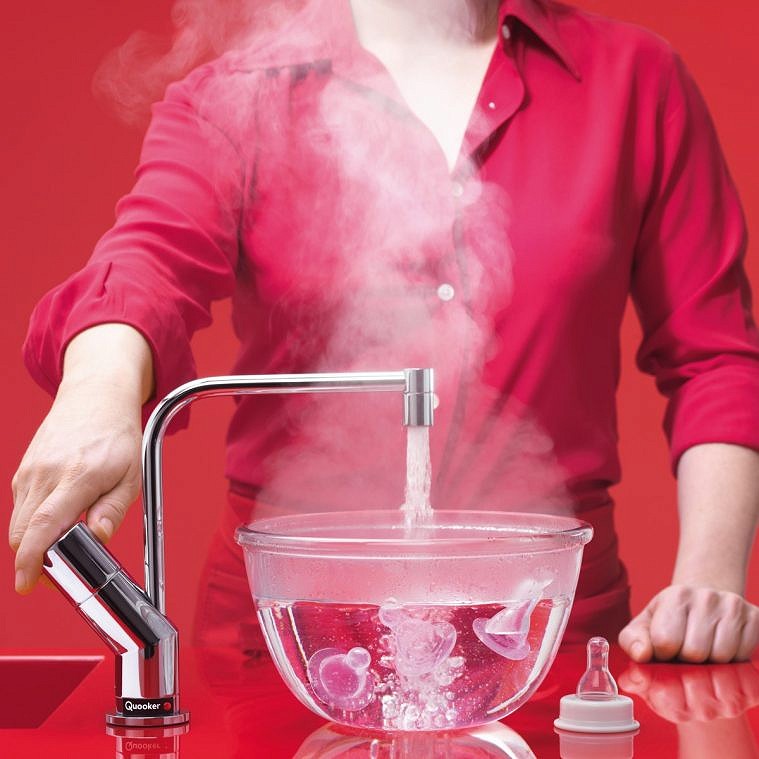Child Safety Week brings to light the importance of creating safe environments for our little ones. Even if children are occasional visitors to your home, designing a child-proof kitchen is invaluable. Not only does it ensure safety during those visits, but it also enhances the appeal of your home to potential buyers with young families.

Opt for kettles with short or coiled cords to keep them out of children’s reach. Alternatively, consider installing boiling water taps like the Quooker, which are childproof and eliminate the need for traditional kettles. Always ensure hot beverages are placed well out of a child’s reach.
Hobs can retain heat long after they’re turned off. Brands like Miele and Siemens offer induction hobs with residual heat indicators and child lock features. When using saucepans, ensure their handles are turned inwards, away from the edge.
Ovens, especially those at floor level, can pose risks. Brands like Miele offer ovens with “touch-cool fronts” and lockable controls, ensuring safety without compromising functionality.
Opt for hygienic countertops made of sealed stone or composite materials like quartz. These are easy to clean and prevent germ build-up. Store knives and sharp tools in knife blocks or racks placed out of children’s reach or consider innovative kitchen island designs with built-in knife storage.
While high stools might be trendy, they aren’t ideal for young children. Incorporate lower seating areas or adjustable-height workspaces that can adapt as your child grows.
Keep small items like fridge magnets away from children under three. Ensure windows are locked or have secure catches, and store potentially harmful substances in high cabinets or cupboards with childproof locks.
Concealed bins or lockable waste containers can prevent children from accessing discarded items that might pose risks.
Equip your kitchen with essential safety tools like fire extinguishers, fire blankets, and first aid kits. Regularly test smoke alarms and consider installing heat detectors, especially if you use gas appliances.
Consider setting up a play kitchen for your child, allowing them to mimic safe kitchen practices. This not only keeps them engaged but also educates them about kitchen safety.
Always supervise young children in the kitchen and avoid distractions. Engage in conversations about safety and consider resources like the Child Accident Prevention Trust for more insights.